Self-sufficiency. What other term in the homesteading sphere carries such a weight of history, responsibility, and hope?
Watch The Video
Visions of lush, productive gardens, cozy wood stoves crackling with hand-split hardwood, provisions lining the pantry shelves, and healthy animals moving through the fields; all dance in our heads backed by the resounding questions: Is it actually possible? What do I need to do to get there? How did the homesteaders of the past make it work?
On our homestead, self-sufficiency has been the name of the game from before we even found our property. And as we have pursued this goal, I’ve been shocked by the amount of naysaying we’ve faced every time we bring up the topic — being told we’re building castles in the sky, that no one was ever really self-sufficient, or that it’s impossible for modern people to become so.
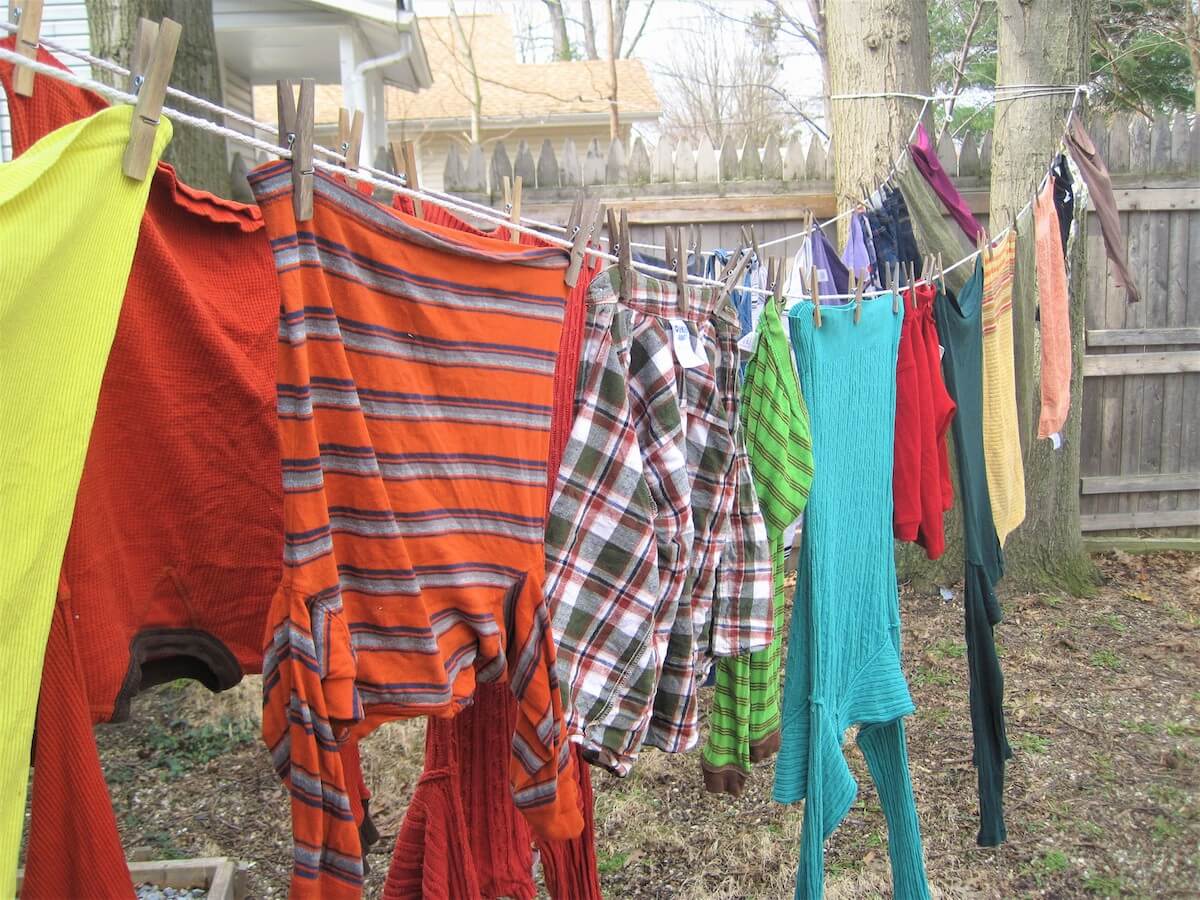
I completely disagree. I am fully convinced that modern people can rediscover the knowledge once held by peasants, farmers, and villagers the world over. It just requires a total willingness to give up the consumerist way of life we’ve inherited, and strive for something different. Something more sustainable in all senses of that word, and not just the trendy version of it.
For the past seven years, I’ve embarked on the quest of self-sufficiency, and I’m positive it is no holy grail forged of unobtanium. Sit down with me for a minute — let’s talk about what it takes to get started on this adventure.
What Is Self-Sufficiency?
I have seen the term thrown around in incredibly varied and often self-contradicting manners. So before I delve in, I want to define self-sufficiency as I’ll be referring to it throughout this article.
This is the definition I’m striving toward, and remember, this is my personal, long-mulled and hard-fought-for view as someone currently “in the trenches.” If you disagree with my self-sufficiency semantics, I would love to discuss it with you further in the comments below.
Real Self-Sufficiency IS:
- Being a producer
- Providing for your daily needs with things and food created by your own land and animals
- Being debt-free which allows for every bit of your energy and resources to go toward your land and family
- Having enough land to support you and your animals’ needs
- Living off-grid and knowing how to maintain your own systems
- Being mentally stable in the face of challenges and willing to figure out how to solve them
- Enjoying the life you’re working so hard to create
Related Post: Free Land: Where and How to Find It
Real Self-Sufficiency is NOT:
- Being a consumer
- Trucking in land fertility, animal food, or dietary staples from outside sources
- Depending on the grid to accomplish your daily tasks
- Living in a vacuum and acting as if the community available around you doesn’t exist
- Relying on purchased dried or canned food stores without the ability to replenish them yourself
- Believing that your problems can only be solved by “professionals”
- Telling everyone you’re working yourself to the bone “just to get by” … and waiting for their sympathy
To sum up, I believe self-sufficiency is developing the mental and physical fortitude and practices that provide for your own needs with your own land, and changing your identity from consumer to producer.
It may be easy to define, but it’s a lifelong journey.
11 Steps To Take To Start The Self-Sufficient Transition
Those who want to start living in a more self-sufficient manner have many good reasons to do so. Whether you are motivated to take less of a toll on the environment by your style of living, feel sick of the dependency that modern society has doled out to you as the “way to live,” want to eat safe, clean, organic food in a sustainable matter, or just wish to simplify and get back in touch with what it means to actually live in this silicon-buzzing, technological era, the important thing is to start the process … and start it now.
Make it an adventure. See what you can reclaim and add to your repertoire as the seasons and years progress. Every step forward is a success, no matter how small at the outset.

The most obvious place to start, in my opinion, is with food. Self-sufficiency can and does cover many areas beyond food, but it is probably the foundation of the entire endeavor. As the process of taking your nutritional and living needs into your own hands progresses, you’ll start adding other ways of caring for yourself and your family to your growing list of skills.
Making your own clothes, curing your own soap, building your own house, becoming more medically skilled, learning how to use manual tools that don’t require gas or diesel, and other worthy abilities, are worth discussing and pursuing.
I have plenty more resources on those skills in the book-list below, but for the purposes of this article, I’m going to mostly stick to food and water, and crucially (yet hardly discussed), the mental attitude needed to become self-sufficient in these areas.
Physical Steps Toward A Self-Sufficient Life
1. Start An Organic Garden, Expand It Every Year
Growing your own fruits and vegetables is crucial to providing the vitamins, minerals, and delicious flavors that make dinner something to savor. If you haven’t done it, start gardening now — no matter how much a novice you are — and learn how to manage your plants, rotate crops, and fight the pests local to your area. There are tons of resources and huge communities surrounding you that are willing to help you learn. Lots of articles here on Insteading, too!
Once you get your fingernails dirty, it’s time to look at refining your garden practices. If you can’t rake in a harvest without using fertilizers and pesticides from the store — including “organic fertilizer” (which is not truly organic, as I wrote in an earlier article) or natural pest-deterrents — you’ve found a red flag on your journey to self-sufficiency.
Related Post: 5 Compelling Reasons to Turn Your Lawn Into a Meadow
Learning how to compost your land’s plant material (autumn leaves are one of many underutilized resources), recycle nutrients from your animals’ manure, and manage pests with what your land produces (wood ashes can deter slugs and snails, for example) is crucial to making your garden the most it can be.
Of course, no discussion on self-sufficiency is complete without the million-dollar question: how big a garden do you need to be self-sufficient? The truth is, there’s no viable answer to that question. Gardening styles vary in harvest-per-square-foot, every plant offers different nutrients, and the crops you can grow in your specific climate are as varied as the gardeners growing them.

It’s more important to focus on your skills as a gardener and preserver. A garden is only a step to self-sufficiency as far as you can maintain and re-grow it the next year, and preserve the harvest in enough quantity to get you through until the next season.
My advice is this — and it’s the advice I’m following myself. As I figure out how much garden space is needed to feed my own family, I focus on a few specific, key crops: tomatoes, leafy greens, squash, onions, and beans (or whatever is key to you) that your family eats the most. Find out how much you need in a year.
Related Post: Garden Planners
Then, find out how to grow that amount in however much garden it requires … and you have your personal answer. Don’t worry if you don’t harvest enough this year. Work on getting more in consecutive years until you reach that goal. Does that sound like a huge project? It’s because it is! But don’t be intimidated. This step is a huge, exciting challenge, and it’s worth the attempt.
Also, to expand your gardening potential, I recommend planting successive crops to get the most from your harvest. Start as early as possible with cold-tolerant plants, like kale, spinach, and peas. As the ground heats up, interplant with the tomatoes, peppers, and other heat-loving plants that will replace them as they wither.
As the year cools down, replant more cold-loving plants to take the place of the frostbitten okra and tomatoes. Be sure to fertilize and reapply mulch with every replacement, and you could get three harvests from a single garden plot!
2. Learn How To Save Seeds, And Which To Save
Once you get your gardening game going, I recommend switching entirely over to heirloom crops. Not only do these old favorites produce some of the most visually stunning vegetables, they also produce seed that is true, unlike the popular hybrids that you often find at the store.
Being able to save seeds from the best of your plants every year will not only give you plants that are specially adapted to your specific climate, but it will also ensure that you can plant the fruits and vegetables you need with the supplies you have.

Annie’s Heirlooms, Baker Creek Seeds, and Seed Savers Exchange are great places to buy your seeds. The best part is, once you get good at saving seeds, you may never have to buy seeds or starts for those plants again.
Related Post: How To Choose, Collect, And Save Garden Seeds
I use Baker Creek’s Heirloom Life Gardener and Suzanne Ashworth’s Seed To Seed as resources for knowing how to save seeds. Whether you’re an old pro or a total newbie, both are important resources for those looking to keep their gardens going on their own terms.
3. Find Your Staple Crop And Find Out How Much It Takes To Support A Year
The fresh veggies from the garden and fruits from the orchard are the flavor and colors of a meal, but you won’t have everything you need unless you secure your staple food. This is the food that forms the backbone of your diet. Staple food has taken tons of different forms around the world: maize, cassava, rice, wheat, millet, potatoes, and so on.
The key feature of a staple food is that it supplies carbohydrates, proteins, and fats, and can be stored well for long periods of time. What does that look like on your land? How do you process and store it? How much do you need to grow? You’ll have to find out.

Part of the mental aspect self-sufficiency that I mentioned includes being “okay” with what that staple ends up being. If you grew up on wheat-based products, but can only get corn or millet to grow on your land, are you willing to relearn everything and start a new life with that dependable staple?
Related Post: Eating Acorns: From Foraging To Cooking & Recipes
If you’re up for the paradigm shift, then you are that much closer to making it work. Studying the cuisines of cultures native to your area — or native to the staple that you’re finding success with — is a gastronomical adventure and may result in some delicious, unique meals that you’ve found nowhere else.
4. Breed Your Source Of Protein And Land Fertility
There are those who will disagree with me on this, and that’s fine. But I believe that self-sufficiency requires a relationship with domesticated livestock. I know that many hunter-gatherer groups are able to support themselves with hunting alone, but those groups aren’t usually based in a single location. When that form of living was more widespread, the earth was healthier and could support the huge, roaming herds of meat-on-the-hoof.
I know I’m probably poking a hornet’s nest by saying this, but I don’t believe you can manage long-term self-sustainability on vegetables and fruits alone. Please note, I am not implying that you can’t homestead as a vegetarian or vegan. I’m just discussing terms of self-sustainability. If there are any vegans or vegetarians who have managed to be totally self-sustaining in their diet without store-bought supplements, I’d welcome your stories!

Additionally, the manures produced by the animals you keep are a vital source of garden fertility, so the nutrient cycle of your land can be complete.
As a side note, I should mention that you can manage good soil fertility with vegetable compost alone. The Nearings of The Good Life were vehemently dedicated to this, so I know it’s possible. But I see the relationship between livestock and humans differently than they did, and if you work animals into your land’s fertility plan, you will quickly see that they are essential elements to your homestead life.
Related Post: Raising Baby Chicks: A Guide For First-Time “Parents”
Figure out what animals you can and want to raise, and learn how to feed, house, and breed them in a healthy, sustainable way. Whether you choose sheep, fish, goats, chickens, ducks, cattle, or even meat pigeons (yes, that’s a thing), make sure you find a way to use everything they can offer you, not just meat.
Also, make it a goal to build up good relationships with nearby animal-keepers so you can trade breeding stock and avoid inbreeding. Every creature has different things to offer the land: pest control, fertility, unwanted brush-to-manure conversion, and so on.
5. Feed Your Animals Entirely From Your Land
For the self-sustaining homestead, producing all the animal feed you need (rather than buying supplemental feed) probably means you’ll never have huge herds and flocks, but you’ll have enough. We work hard to provide our animals with access to forage, and if they can’t free-range safely, we bring that forage to them daily. With fewer animals, this is possible as a daily chore.

You should start practicing the ancient skill of harvesting and curing hay from your own land, and use scythes and rakes if you want to really go for broke. It is quite an enjoyable, even poetic chore. Check out The Scythe Book for a beautifully-written and highly useful write up on this undersung part of sustainable living.
Another important part of the house to consider when it comes to feeding your animals, is whether there are any pets that are a part of your home. Can you find a way to feed your birds, cats, and dogs from resources you can nurture on your land?
6. Store Enough Food To Get You Through The Winter
When I read the Little House on the Prairie series as an adult, I got chills. Much of the content of those stories are detailed portraits of people who spent their entire year preparing for the winter, and doing it successfully. I know that people the world ‘round have done this for centuries, but I have never done it. I don’t know how yet!
You may find yourself in a similar place as a child of the technological era, where grocery stores and snowplows made fresh tomatoes, exotic coconuts, and strawberries available all year round — no matter what the reality was outside.
The learned dependency of a comfortable childhood in the modern age probably taught us nothing about how to do things for ourselves, but that need not be our inheritance.
We can rediscover how to ferment, pickle, preserve, dry, and store provisions. Books like The Art of Fermentation, Preserving Food without Freezing or Canning, and Stocking Up, can give you the guidance to reclaim these not-entirely-lost arts.
7. Get Your Water Off The Grid
You, your plants, and animals will only thrive if there is water. If your water is on the grid and gets cut off for whatever reason, all your hard work can, quite literally, dry up!
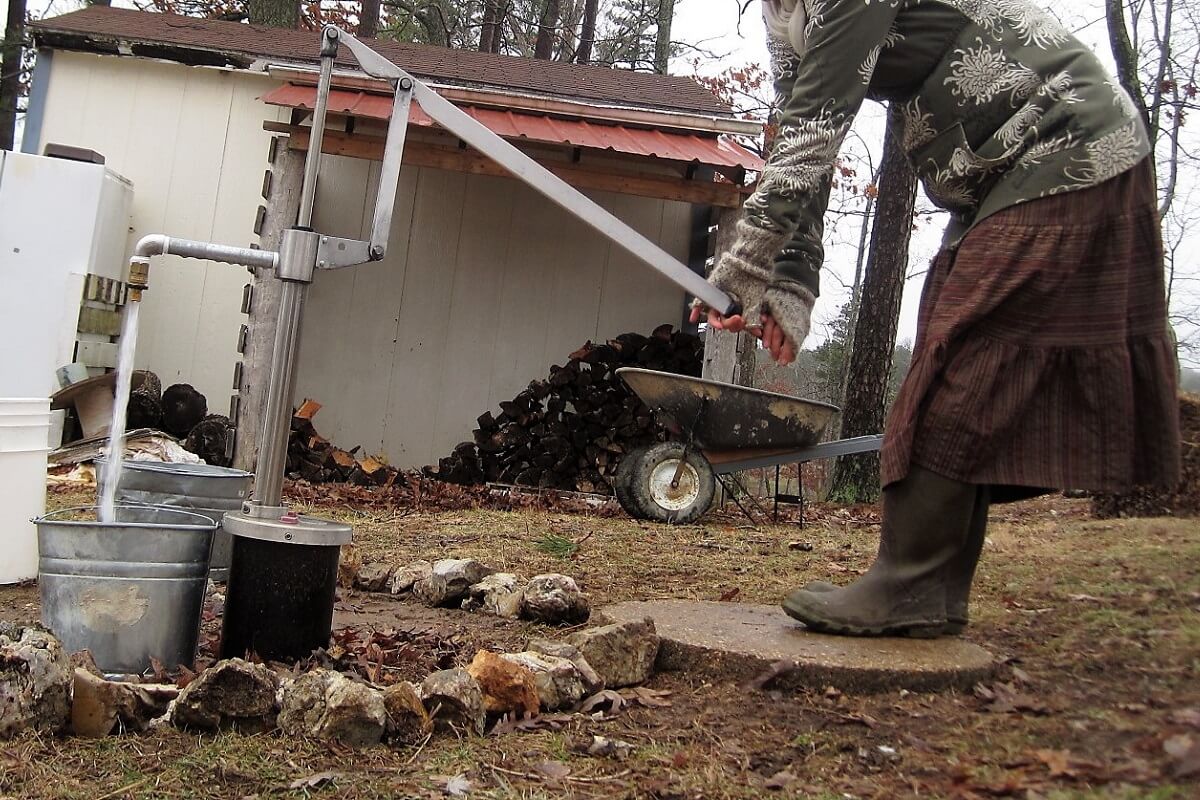
I’ve written a long article on all the resources we’ve used while getting our homestead water off-grid, and you can find it here!
Mental Steps Toward A Self-Sufficient Life
Research “self-sufficiency” online, and you’ll come across many psychological journals on the subject that have nothing to do with gardens and stacking wood. From a psychologist’s perspective,
‘Self-sufficiency’ is the quality of feeling secure and content with oneself, a deep-rooted sense of inner completeness and stability.
The mental approach you assume to live a self-sustaining life is vital to its success. As you make the transition, you may have to confront many issues in yourself: fears, uncertainties, inadequacies, or self-doubt.
On this journey of fortifying your resources, you also need to develop a fortified mind. Pursuing self-sufficiency will force you to learn when you don’t know, try even if you don’t know how it will end, shut down your inner doubting voices, and choose to NOT fear. Talk about a crash-course in real life!
8. Get Out Of Debt
Debt is a mental roadblock as much as it is a financial hurdle. If you are currently paying off student loans or trying to get out of debt, fight as hard as you can to liberate yourself.
If that means canceling your subscription services, forgoing your daily latte, cooking your own food, walking more, and not needing to go out on the town to have a good time — you’re already practicing self-sufficiency! I wrote an article about frugal living that’s full of more good tips. Check it out here.
Related Post: How to Pay Off Debt by Thinking Like a Homesteader: 20 Practical Ideas to Try
9. Never Have A Pity-Me Mentality
Deciding to start the journey of self-sufficiency should have the same feeling as an adventurer setting out into unknown territory. It is full of excitement, anticipation, and maybe a little trepidation, but mostly brave-eyed exploration. No one is forcing you on this journey. It should be an intrinsic desire to live better, more meaningfully, less wastefully, less dependently, and so on.
I’m not going to lie to you, it is hard work — perhaps the hardest you will ever work. But if you want to live this way, and you want to work hard, it is the most satisfying of efforts.
Related Post: 5 Questions To Ask Yourself Before You Become A Homesteader
On the other hand, if you want to live comfortably — never pull off a tick, sweat through your shirt by midday, haul a bucket, or scoop poop — and would rather spend your downtime after work catching up on your Netflix queue, that’s fine. It just means self-sufficient homesteading is probably not for you.

Also, if the challenges of trying to relearn these skills overwhelm you, or if you start getting jealous of your “normal” friends, that’s another red flag to stop and take a moment to look over your motivations. Maybe you’re trying to do too much too soon.
It could be you are lacking a shared end-goal with your family, and they just see it as your “weird project.” Maybe you need to reevaluate why you started it in the first place. A self-victimizing mentality will be the biggest block to your self-sufficiency. So if you are starting to hate where you are, do something about it — even if that means taking a break.
Learning how to produce what you need and want shouldn’t be a drudge and ordeal. Here’s an example. Last year, I decided to quit coffee which is something I truly did like, but I knew I couldn’t grow it, so I decided it wasn’t worth it. This didn’t mean I wasn’t allowed to have delicious drinks: finding our acorn-chicory alternative was such a fun, enjoyable process for my family, that there was no reason to complain!
10. Get Rid Of Your Addictions
The term “addiction” is often only associated with alcohol and drugs. But change that word to “dependence” which has essentially the same meaning, and suddenly you may see it in your life. What would ruin your day if you couldn’t have it? Can you not function without your morning cup(s) of coffee? Would you throw in the (literal) towel if your dishwasher broke down for good?
Do you find yourself checking for the presence of your cellphone in your pocket, just to make sure it’s there? If your social media accounts were suddenly vaporized, would you still know how to interact with friends? All these distractions and dependencies, however innocuous they may seem on the surface, are dependent on something you can’t control — and mining you for your time or data.
If you really need something that you can’t produce yourself (and that thing isn’t crucial to life) seriously question whether or not it is taking more from you than it is worth.
11. Eliminate The Concept Of Waste And See It As A Resource
Being able to waste something, toss it in the trash, or flush away what you don’t want to deal with, is a consumerist privilege taken by those who are decidedly not seeking self-sufficiency. In a nutrient cycle of a self-sufficient homestead, there is essentially no waste. Everything is a nutrient that just needs to be put into the next step of the process. To waste “waste” is a waste!
When you are growing all your own food, the idea of “throwing out leftovers” becomes a crime to the worst degree. Rethink all inedible food scraps and manure as soil fertility in the making, and route it as such.

We use our chickens to recycle garden cuttings, spent plants, and inedible food scraps. Chickens are fantastic fertilizer factories! Anything that your chickens can’t eat can go into a humanure pile (things like chicken bones from the stock, and any fruit and veggie peels that are toxic to them). All of it eventually goes back into the garden or orchard after being safely composted, and the cycle begins anew.
So, Is True Self-Sufficiency Really Possible? A Word About Naysayers
In a word, I believe YES. But you will find many detractors to the notion that a family could provide for their own needs, even though families have done so around the world for centuries. Be discerning about what you read online. If you research “self-sufficient living” (as I have often), you will find articles trying to convince you that it is a pipe-dream, and anyone who is attempting to do so is deluding themselves.
Articles like those drive me up a wall because they are strongly-worded, stereotype-driven essays clearly written by people who haven’t even attempted self-sufficiency. Propaganda pieces like this one, written by an author who had a garden for a few years and then called it quits, argue that we need to depend on the government to be truly self-sufficient — an oxymoron that makes my head spin.
Even worse, this article declares self-sufficiency is another word for poverty. I’d like the author to join us for one of our homestead breakfasts. We enjoy organic, free-range eggs topped with fermented hot sauce made from garden peppers, and sourdough bread made from organic wheat and foraged acorn flour that we manually grind ourselves. It’s a meal that would probably cost upward of $15 a plate at some hipster-foodie restaurant and that hardly makes us feel impoverished.
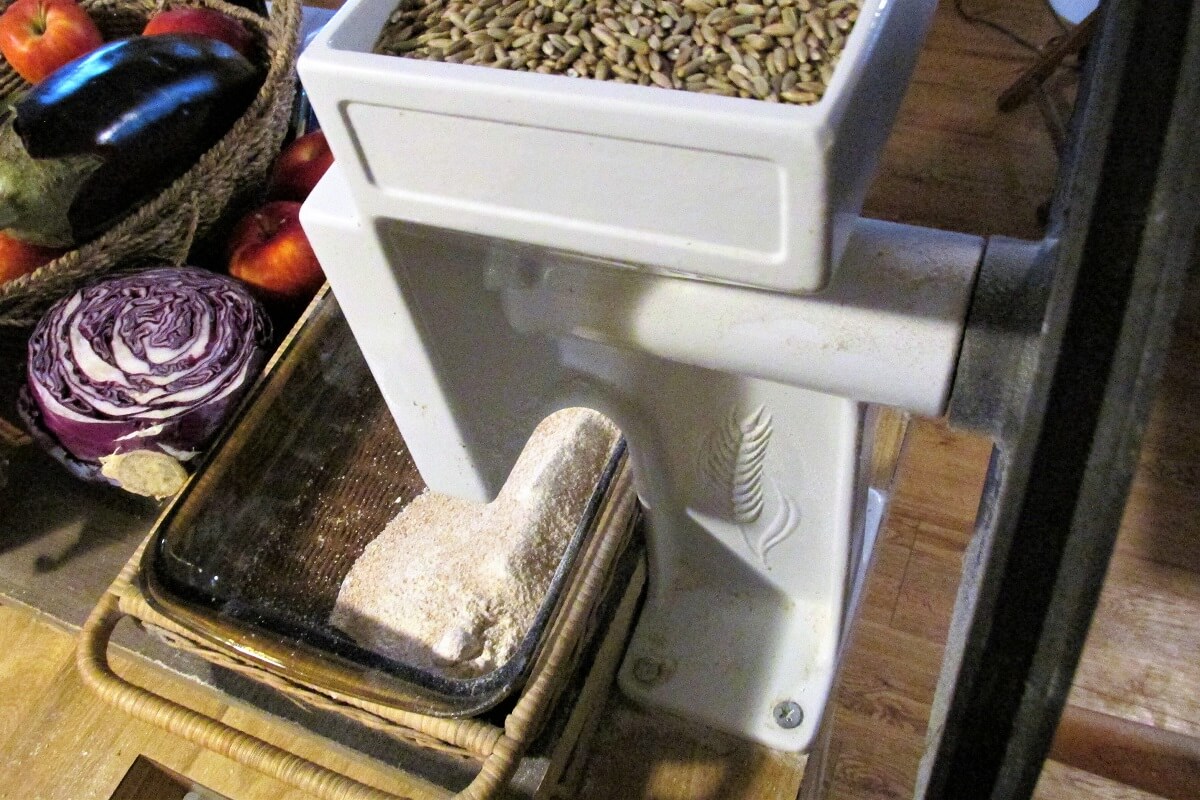
I would argue that the modern definition of self-sufficiency has been made far too narrow in the 21st century. In an attempt to avoid facing the lazy choices that they have made (and keep them dependent), detractors are pedantically insisting that self-sufficiency is impossible for the modern man.
The truth is, self-sufficiency is a progression, and a long process of infrastructure-building, skill-acquisition, mental paradigm-shifting, and resource prioritizing. For those of us starting from scratch, it may take a lifetime. But as you start to forge your own independence from all the various outside systems vying for your data, time, and resources, you may see that self-sufficiency doesn’t benefit the economy very well, or keep you under someone else’s direct control. Perhaps that’s why there’s so much online fire against it.
Being self-sufficient does NOT mean that absolutely everything you use can only come from your own hands. Neither does it mean you could totally thrive if dropped off in the middle of the wilderness with nothing. I truly believe that self-sufficiency means that you are able to produce the necessary foodstuffs and items you need to live, that you know how to replenish them, and you aren’t dependent on outside inputs to keep your family, land, and animals alive.
The main point is, if your access to outside resources were cut, you would be able to carry on. You would be able to sufficiently supply your needs for survival, yourself. Self-sufficiency.

But in the meantime, that standard doesn’t mean you’re not allowed to trade with neighbors, use cast-iron pans, wear shoes, go out for ice cream, or go on the internet to work (like I do with these articles).
If I was finally at the stage where we were growing 100% of our food and had secured all of our necessary resources, and we were weaving our own cloth from home-grown wool (future goals), I’d still go to the store and buy a bar of chocolate to enjoy — even though I couldn’t grow the cacao beans ourselves. Chocolate is not a need, so we can totally survive without it. But it’s a wonderful thing to enjoy.
And enjoy this life we do. We edge closer to the goal of self-sufficiency every year by lightening our impact on the environment, delighting in our 12-acre classroom, facing problems that force us to think, eating the freshest food we’ve ever encountered, and watching the fruit of all this labor start to develop — both literally and figuratively.
It takes a long time and a lot of work to get the whole shebang running. But in the meantime, take the steps to develop wonderful friendships with your neighbors and learn from the farmers at the market.
And just laugh at how you’re hardly living the draconian, isolationist, hardscrabble existence that seems to be the stereotype of folks seeking self-sufficiency. Where did that idea even start?
I hope we all can reach the goal someday, and you’ll agree it is a dang fun adventure; the best sort of life to live.
Self-Sufficiency Library Must-Haves
There is so much more to talk about when it comes to self-sufficiency, but rather than regaling you with my relatively newfound knowledge, I want to point you in the direction of my teachers. Most online articles — this one included — just can’t contain all the information you really need to know true self-sufficiency.

So if like me, don’t know where to find the information needed, books have been a way to fill the knowledge gap left by a lack of cultural training. Though your neighbors may also be a huge help, these old books often hold information that most modern people seem to lack. The following list is books that we own and use on a sometimes weekly basis.
- The Complete Herbal Handbook for Farm and Stable: The only animal care book I recommend in terms of self-sufficiency. Juliette is super old-school and teaches methods of animal care from materials you can grow and forage on your land. Almost all modern books entirely rely on store-bought minerals, feed, and medicine.
- The Complete Book of Self-Sufficiency: John Seymour’s life work was reconnecting people with the skills and ideas they used to have to live. The link here takes you to a free online version of the book, and it’s well worth your time!
- The Foxfire Series: A huge treasure trove of stories, diagrams, and anecdotes from the self-reliant Appalachians, documented and preserved before their wisdom disappeared with them
- Bittersweet: An Ozark version of the Foxfire project entirely available online.
- The Scythe Book: Cut, harvest, and cure your own hay without any machines.
- Liquid Gold: Turn urine into a resource, not waste.
- The Humanure Handbook: The go-to guide for safely composting human waste into soil fertility (free online, if you want it).
- Rosemary Gladstar’s Medicinal Herbs: A good start for knowing and growing your own medicinal herbs.
- The Forager’s Harvest, Nature’s Garden, Incredible Wild Edibles: The BEST foraging books I’ve ever found.
- Back to Basics (Note: The Homesteading title in this series is, in my opinion, NOT worth the purchase)
- Tanks, Cisterns, Aquifers, and Ponds: Ways to store off-grid water.
- Create an Oasis with Greywater: Ways to use greywater as a resource, not waste.
- The Bread Builders: Sourdough is the way to go!
- Preserving Food without Freezing or Canning
- Stocking Up
- The Art of Fermentation
- The Art of Natural Cheesemaking
- Basic Butchering of Livestock and Game
- Edible Forest Gardens, Book I and II
- Heirloom Life Gardener
- Seed to Seed
- The Complete Vegetable and Herb Gardener
- Permaculture, a Designers Manual
- Restoration Agriculture
- Keeping Warm With an Axe

















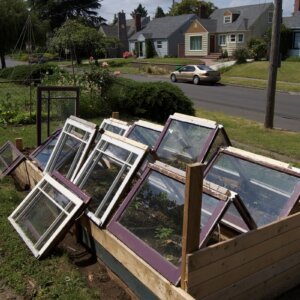
















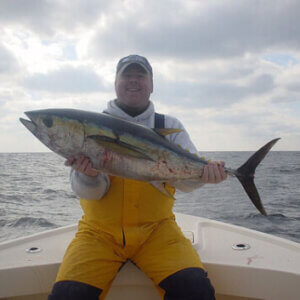




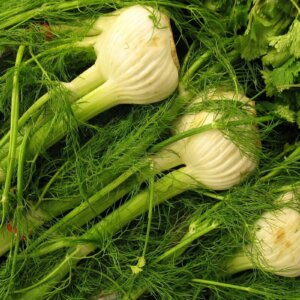


It all depends on what your definition of self-sufficiency is! I like your definition and attitude. 🙂
I have been working to be as self-reliant as I can on 1 acre for the last 9 years. There are definitely limitations with that amount of land. As I get older I find that some of the projects are overwhelming. But I still do the best I can with what I have.
Growing up on a farm helped me to understand the amount of work necessary to be self-sufficient, so I had an advantage when I started urban homesteading in the late 1980s.
Thanks for the well thought out article!
Thanks so much for your thoughtful comment, Lisa! You definitely have a huge advantage with your farming background–I feel like I wasted my time with my college degree, though I certainly didn’t know it at the time. Now, I would exchange it in a heartbeat for a rural, hard-working childhood to teach me the ropes that I’m still trying to get a handle on as an adult.
Hello everyone, I recently bought a 2arce land with a tiny house and start planning to live a self-sufficient way. I am little scared as I have not too much farming experience. But I will keep positive…
Cheers
Don’t worry; Universe will teach you!
I recently bought 2.4arces land with a tiny house. I want to start a self-sufficient living. But I feel 2.4acres of land may not be enough for living after reading your article.
But this is my first step to start. Just being positive….
Your article is inspiring!
The words used here to express the situation sounds pretty amazing, but is it really that possible to actually leave a job and live like this?
I am Sid, living in New Delhi and I am fed up with my work. But I cannot see what lies ahead. While I am continuing the 9 to 5 like a zombie, I feel taking a step towards actually going away from the cobweb and pursue something like the article states.
Thank you for the detailed article. I mainly think of being self-sufficient as not needing others. Which, can be considered sad, but if you can handle everything yourself, can depend truly on your skills, you will be of no burden to others. Of course, this doesn’t exclude having friends.
Nice article. Although I am not able to get everything done, I feel like I can get started with few items. Been watching few videos and reading articles about getting started with Self Sufficiency and will sure get started with getting rid of debt and having a veggie garden.
Good article and references, though seem to imply land areas that may not be attainable for quite some time or never with many people, especially those living in small countries. Topics related to small gardens help, whether or not it may achieve self-sufficiency status for the reader.